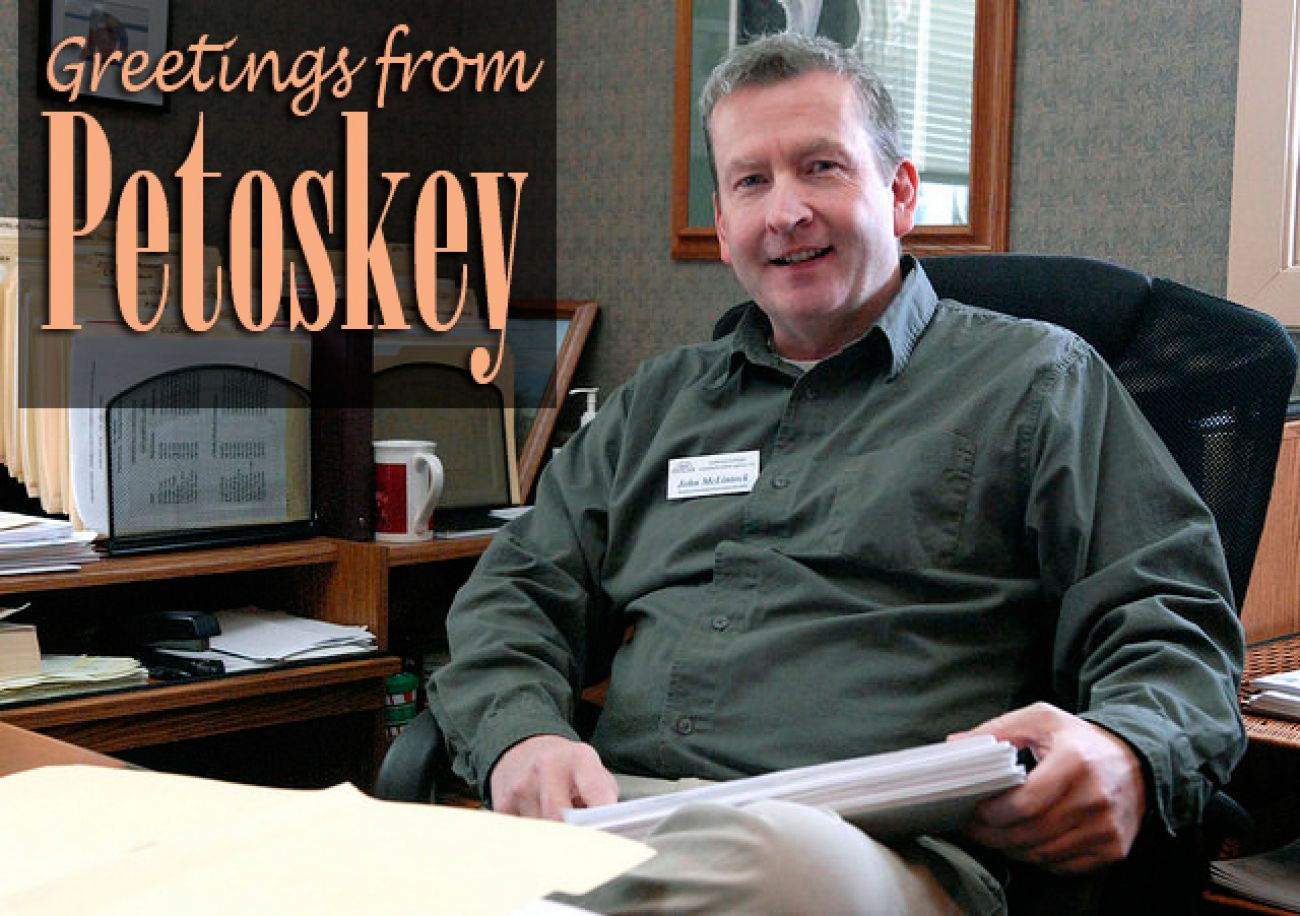Postcard: A roof and a bed

NEXT POSTCARD: A prodigal daughter finds homecoming a real page-turner →
Homelessness is often painted as a decidedly urban phenomenon. The untreated addict or mental patient pushing a grocery cart of belongings along a city street or sleeping in a doorway – that’s what homelessness looks like, right? Not in a rural area, cautions John McLintock, above, of the Northwest Michigan Community Action Agency. In a year, up to 400 people in Charlevoix and Emmet counties will spend at least some time homeless, which the agency defines as being “without a typical nighttime bed,” McLintock said. “That would include shelters, cars, sheds, a garage in the winter, a camper in the winter with no water or heat,” he said, all of which he will typically see. Many of the rural homeless don’t want to be seen or found, and in an area with dense woods and structures that stand empty for much of the year, it’s not difficult to stay hidden. “They might be walking the streets with a backpack,” he said. “In a college town, lots of people carry backpacks.”
But beyond those differences, the drivers of the condition are the same: Mental illness, addiction and domestic violence, typically, and sometimes combinations of factors – “We have a casino in our backyard, which doesn’t help,” McLintock said. Prescription-drug abuse is coming on strong as a factor, too. “In the six years I’ve been doing this, it’s become a real discussion on a daily basis. I have clients who have been on Suboxone (to treat opiate addiction) for seven years, which is a problem in and of itself. And meth is everywhere up here.”
McLintock’s job is to get them housing. “We’re a non-judgmental agency,” he said. The goal is to get them under a roof, and then worry about what led them to the street. There’s something about sleeping warm, dry and safe that can clarify matters for people so afflicted.
The region has adequate homeless relief, McLintock said, including a shelter in Petoskey that serves both men and women, and various churches. But the need is always there. On a recent afternoon, McLintock went down the line of people at a food pantry conducting a “PIT count,” or point-in-time count, to get a snapshot of who and how many were in need. Although most reported they were fine, he did sit down with one woman, who said she left her husband two months ago but had been staying with her sister, and was wearing out her welcome. “I can’t work,” the woman said, almost inaudibly. McLintock encouraged her to see a social worker in Cheboygan County, where she lived, and get the help she needs, before she becomes one of the 400.
– Nancy Derringer
NEXT POSTCARD: Git-’er-done spirit helps one rural school district →
See what new members are saying about why they donated to Bridge Michigan:
- “In order for this information to be accurate and unbiased it must be underwritten by its readers, not by special interests.” - Larry S.
- “Not many other media sources report on the topics Bridge does.” - Susan B.
- “Your journalism is outstanding and rare these days.” - Mark S.
If you want to ensure the future of nonpartisan, nonprofit Michigan journalism, please become a member today. You, too, will be asked why you donated and maybe we'll feature your quote next time!

